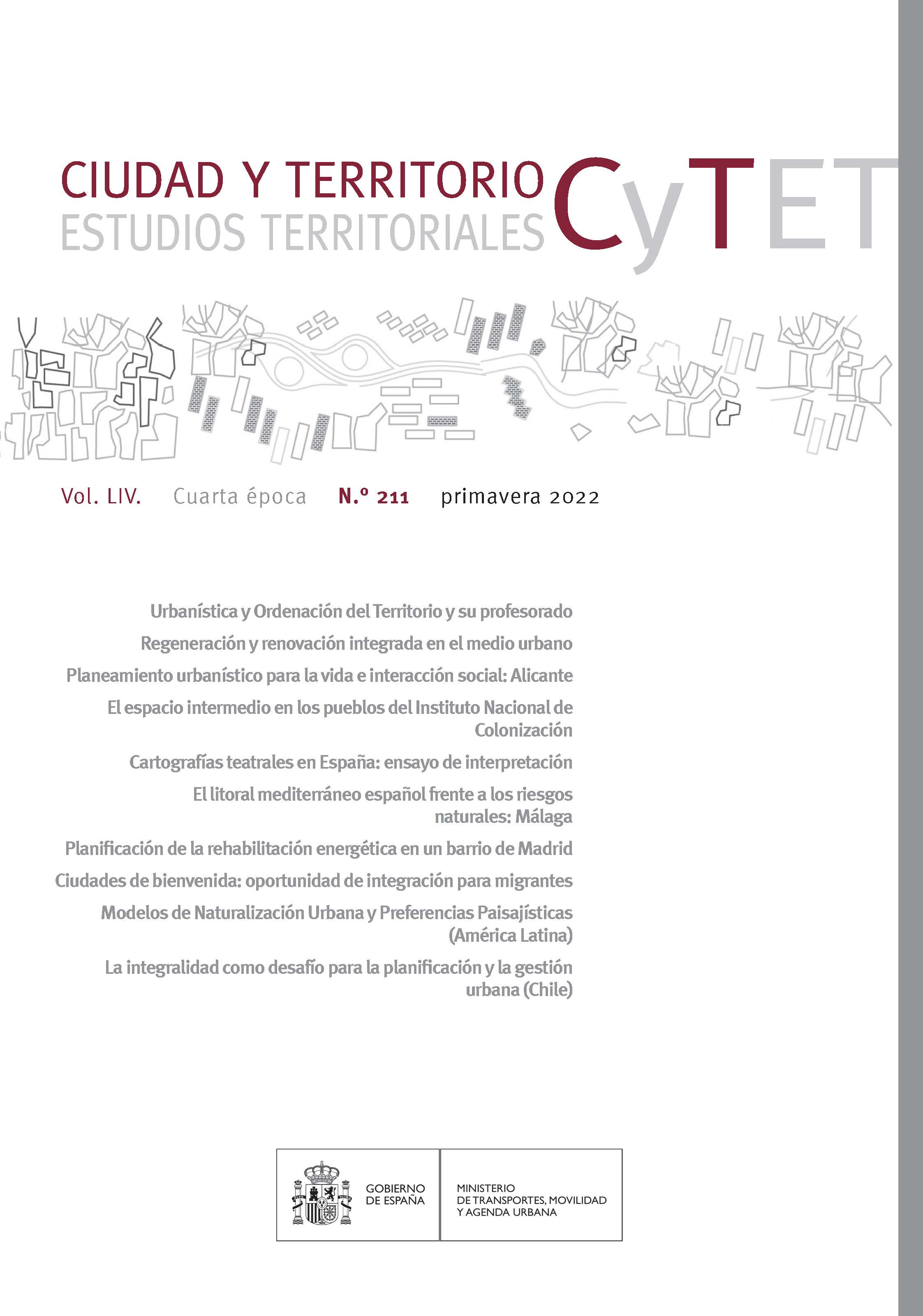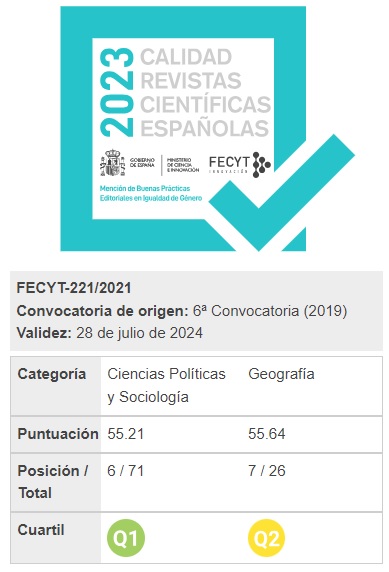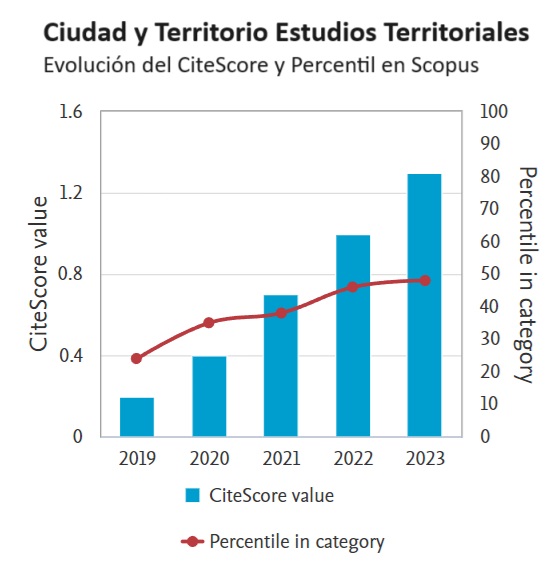Integrated approach as a new challenge for urban planning and management: review of perspectives, approaches and tools for territorial intervention
DOI:
https://doi.org/10.37230/CyTET.2022.211.9Keywords:
Integrality, Integrated Urban Management, Governance, Integrated Urban Planning, Zones of Public InterestAbstract
Integrated approach as a concept has recently begun to gain relevance in the design and implementation of public policies, establishing itself as one of the main forms of urban management.
Associated with the intervention of the territory in a multidimensional way, however, for many, it has become part of the neoliberal rhetoric. In order to open the debate regarding the need to review the new approach as a tool to address territorial equity, the study works from the analysis of different concepts and types of urban interventions that have been imposed with the challenge to achieve integrality.
This was complemented by the review and analysis of the implementation methodology of the Public Interest Zones developed by the Ministry of Housing and Urbanism of Chile, with the aim to install a comprehensive work methodology that is committed to the articulation of actions in the territory.
Downloads
Published
How to Cite
Issue
Section
License
Copyright (c) 2021 Mónica Alejandra Bustos-Peñafiel

This work is licensed under a Creative Commons Attribution-NonCommercial-NoDerivatives 4.0 International License.
Considering the provisions of the current legislation on Intellectual Property, and in accordance with them, all authors publishing in CyTET give -in a non-exclusive way and without time limit- to the Ministry of Transport, Mobility and Urban Agenda the rights to disseminate, reproduce, communicate and distribute in any current or future format, on paper or electronic, the original or derived version of their work under a Creative Commons Attribution-NonCommercial-NoDerivative 4.0 license International (CC BY-NC-ND 4.0), as well as to include or assign to third parties the inclusion of its content in national and international indexes, repositories and databases, with reference and recognition in any case of its authorship.
In addition, when sending the work, the author(s) declares that it is an original work in which the sources that have been used are recognized, committing to respect the scientific evidence, to no longer modify the original data and to verify or refute its hypothesis. Author(s) also declare that the essential content of the work has not been previously published nor will it be published in any other publication while it is under evaluation by CyTET; and that it has not been simultaneously sent to another journal.
Authors must sign a Transfer of Rights Form, which will be sent to them from the CyTET Secretariat once the article is accepted for publication.
With the aim of promoting the dissemination of knowledge, CyTET joins the Open Journal Access (OA) movement and delivers all of its content to various national and international indexes, repositories and databases under this protocol; therefore, the submission of a work to be published in the journal presupposes the explicit acceptance by the author of this distribution method.
Authors are encouraged to reproduce and host their work published in CyTET in institutional repositories, web pages, etc. with the intention of contributing to the improvement of the transfer of knowledge and the citation of said works.








 Enlace a CyTET en Linkedin
Enlace a CyTET en Linkedin